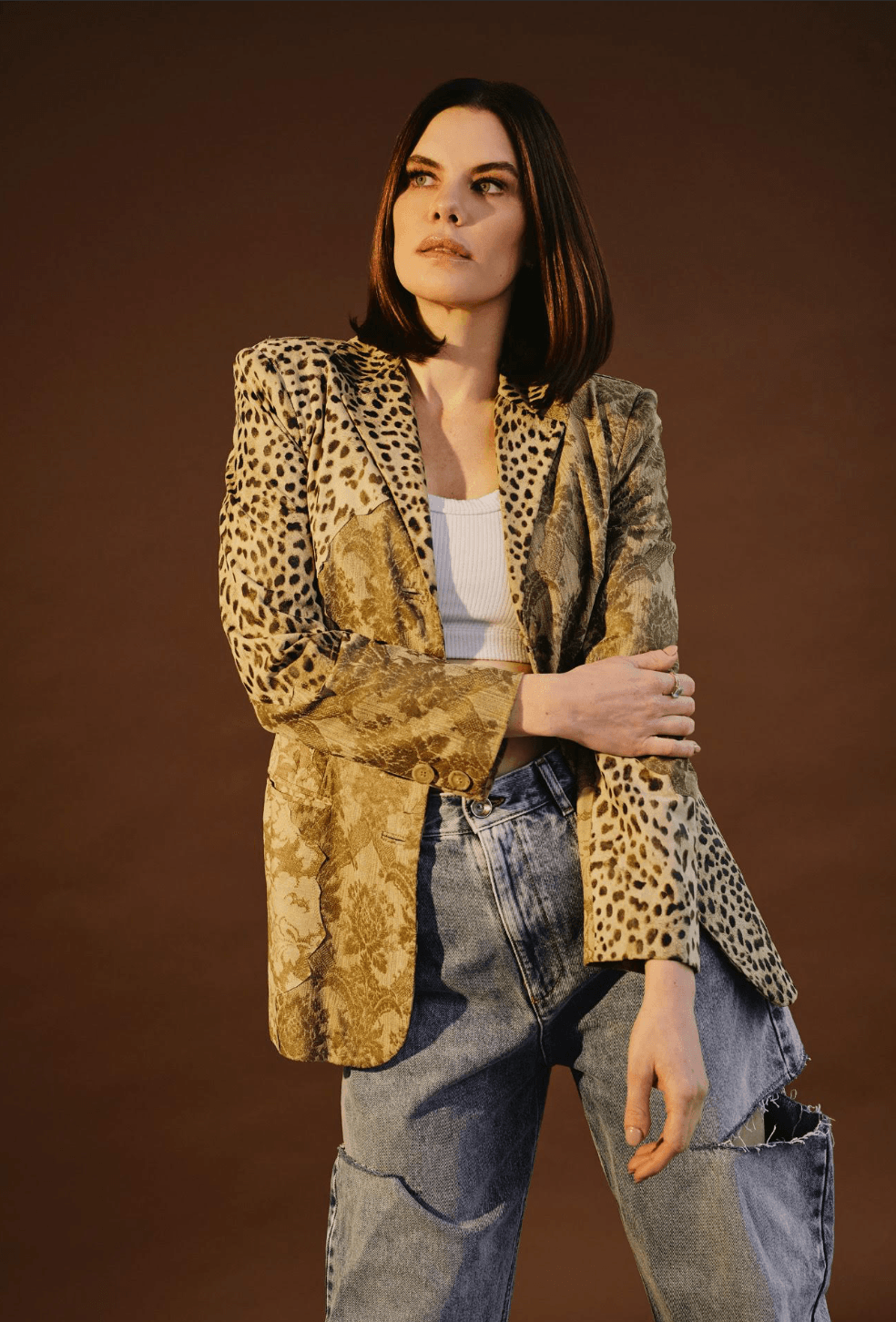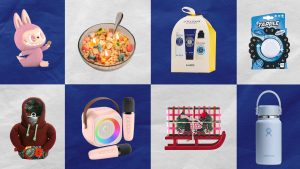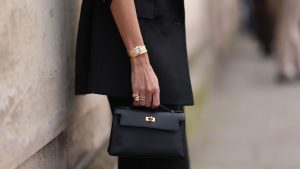
Stylist Meredith Koop Is Finally Spilling on Michelle Obama’s White House Style
The Look was Michelle Obama’s idea, of course. From the way her longtime stylist Meredith Koop tells it, the stunning new book about the former first lady’s White House style wouldn’t have happened otherwise.
“It’s been in the ether for a while,” Koop tells me over the phone about the idea for The Look, which is out now via Penguin Random House. “And obviously, me being the fashion person, I was involved in it.”
During her eight years in the White House, Obama avoided talking about her style so her clothing wouldn’t be a “distraction” from the many initiatives she championed during her time as first lady. That silence didn’t stop fashion media, however, from devouring every look. And through it all Koop has been her sartorial secret weapon. She’s worked with Obama since the earliest days of her husband’s presidency, when Koop says there was a “hyperfixation” on the first lady’s presentation, and has continued to help shape her style during her post–White House career as a speaker, author, producer, and yes, fashion icon.
“Being the first lady is a very, very rare position to be in,” Koop says. “There are very few of them, and having this peek inside of that world is so interesting. To me, The Look is a historical document.”
Courtesy of Penguin Random House
Elena Mudd
Within the first lady’s staff, Koop says, her role was a unique one. “There is one position that a first lady can fill with a person of her choosing. It could be child care, it could be a gardener, or it could be some assistant that they want to bring along with them. It could be anybody. And that person was me.”
As such, Koop was a bit of a one-woman show (not accounting for tailor Christy Rilling, who came in from New York for fittings with the first lady). Koop was responsible for conducting research, calling in clothing, presenting her vision to Obama, and then executing the final look with all the alterations and preparation that were needed. One of the most important, and most unpredictable, aspects of the job was what she calls risk assessment. And no, that doesn’t mean the potential for a wardrobe malfunction.
The first lady’s stylist is responsible for thinking through every possible scenario that could occur, from changes in the weather to an unforeseen national tragedy. “If you planned on wearing something bright and fun, maybe you’re going to make a different choice because of the political climate or the tone of what’s happening in current events,” she says. “Those are all things that had to be considered.”
Koop relays the grueling hours of the position with the kind of weary-eyed deference of a soldier—and the humility too. Those long days rushing around 1600 Pennsylvania Avenue with racks of clothing, garments multiplying with such speed that she outgrew her office, spilling over into other rooms, was just the nature of the White House. Everyone worked hard, and everyone understood the gravity and privilege of working in one of the most revered offices in the country.
“I think the defining feature of being there is that it’s pretty much constant work,” Koop says of her time in the White House. “I was just doing whatever needed to be done.”
Within the administration, Koop was a bit of an outlier: Prior to working as Michelle Obama’s stylist, she had no professional experience dressing politicians, or even people in the public eye. Before she met Obama, Koop was another 20-something in Chicago trying to figure out her life. She’d received a degree in clinical psychology but was working in retail and other “clothing-related” positions while she weighed whether or not she wanted to dive into being a therapist.
“I literally was like, I don’t really know what I’m doing next. I’m looking for a sign,” she says. Then an old boss from the clothing store Ikram, where Koop had worked prior to returning to school, gave her a call.
“She was looking for someone to be a go-between, a liaison type of person—some people would call it an assistant stylist in today’s language,” she says. “You can imagine, it’s kind of a weird, shocking phone call to receive.”
Shortly after that, just before the 2009 inauguration, Koop met Obama and the first daughters, Sasha and Malia, for the first time at Ikram. “Michelle said to me, ‘If you work hard, and you’re smart, and you’re funny, this is going to work out,’” Koop says, adding with a smile in her voice, “Those three things were true of me at that time.” Koop continued as an assistant for a while before assuming the role of stylist full-time.
Michelle Obama with designer Jason Wu and the gown he created for her to wear at the 2009 inaugural ball, as she donates the dress to the Smithsonian’s National Museum of American History in Washington in 2010.
Brooks Kraft/Getty Images
Though they’ve worked closely together for the better part of two decades, Koop speaks of Obama with a tone of reverence and at a slight remove. It reads as a sign of respect for former first lady, whom she still dresses to this day, as well as for the office of the presidency. When we touch briefly on the current president, it’s in regard to Trump’s demolition of the East Wing, where the first lady’s office was located.
“It speaks to what people think is important and what people think is not important,” Koop says on the subject. “I wonder where in the future an office of a first lady will live, where the people that work for a first lady on her initiatives will be, how seriously those initiatives will be taken in a world that’s already so wrapped up in misogyny. It is just a very clear action about what this administration’s value system is.”
Under the Obama administration, Koop adds, the messaging was always clear: Inclusivity, diversity, and hope were at the core of policy and aesthetics. It was an ethos Koop took very seriously.
As first lady, Michelle Obama became known for what the fashion press called “fashion diplomacy”—that is, showing good will and the administration’s values via her wardrobe. She often wore up-and-coming American designers to communicate her support for our country’s fashion industry. Jason Wu, for example, was just 26 when Obama wore one of his gowns to the 2009 inauguration ball, putting him on the map. While abroad or hosting the head of a foreign state, she’d wear a look by a designer from that country or by an American designer of that country’s descent. Who can forget the shimmery rose-gold gown by Italian fashion house Versace that she wore when the White House hosted a state dinner for the Italian prime minister?
“I always had little stories going on in my mind about what each look meant,” Koop says of the intention behind choosing certain designers, motifs, or styles. “I found it interesting what people got right and what they didn’t get right.”
She would know—she says she read all the articles about Obama’s fashion. As with with most things, Koop found a little bit of truth and a lot of projection in those analyses. She tried not to internalize any of it too much; she says both she and the first lady understood that the first Black first lady of the United States would draw an extra layer of scrutiny.
Wearing the Indian-American designer Naeem Khan at the state dinner for India
Brooks Kraft/Getty Images
Wearing vibrant red Alexander McQueen at the state dinner for China
Brooks Kraft/Getty Images
Wearing Korean-American designer Doo.Ri at the state dinner for South Korea
Brooks Kraft/Getty Images
Wearing the Italian brand Versace at the state dinner for Italy
Leigh Vogel
When she started working with Obama, Koop was not a known entity in the fashion world with the style pedigree and black book of connections one might expect from a woman in her position. She grew up in the suburbs of Saint Louis, where she was clothes-obsessed—but not more so than any other little girl with an older sister and access to MTV. As a kid,she dreamed of being a professional dancer or maybe a surgeon. Styling wasn’t the coveted career that has become thanks to social media, where it’s often portrayed as the most glamorous hustle out there.
In fact, the rapid ascent of the stylist turned celebrity model does raise the question: What is the future of the profession? Koop has an idea. In addition to continuing her work with Obama, Koop is an advisor for Alta, an AI startup founded by Jenny Wang that claims to be “your personal AI stylist that truly gets you—from the clothes in your closet to the looks you love.”
Before you ask, Koop’s not worried about AI taking her job. “There’s so much that I bring in terms of the relationships and how I work specifically,” she says. “There’s no part of me that’s sitting here going, Oh, no. AI is going to take away the way that I approach my work.”
If anything, she says, apps and programs such as Alta will give people of different socioeconomic backgrounds the opportunity to play with their style and to feel confident in dressing for specific occasions. It feels aligned with the Obama-era messaging of inclusivity and affordability, in a way. Maybe AI will assist the young Meredith Koops of the world in realizing their ambitions even earlier, perhaps before they set off for a degree in clinical psychology.
“Listen, I might look back on this and go, I changed my mind,” Koop says of the AI stylist. “But who knows? Who knows what’s going to happen next?”











